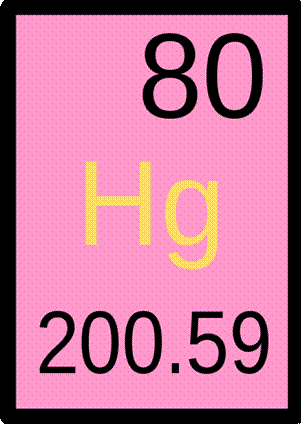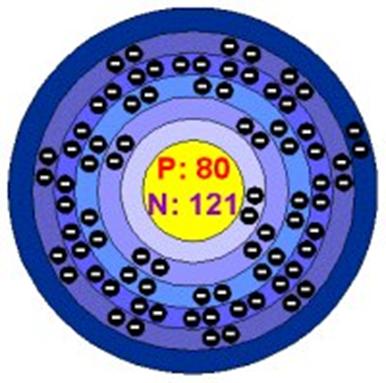
Home | About Us | JCPS Home | EHS Science Video
- Chemistry Topics: 1) Matter and Measurement, 2) Atoms, Molecules, and Ions, 3) Stoichiometry, 4) Aqueous Solutions, 5) Thermochemistry, 6) Periodic Properties, 7) Solids, Liquids, and Gases, 8) Chemical Bonding, 9) Molecular Geometry, 10) Properties of Solutions, 11) Chemical Kinetics, 12) Chemical Equilibrium, 13) Acid-Base Chemistry, 14) Thermodynamics, 15) Electrochemistry, 16) Nuclear Chemistry
MERCURY
by Sydney Ferrara
The Hindus and Chinese discovered mercury in 1500 BC. They discovered it near the Egyptian tombs. “It was named after the planet Mercury.” (Emsley, Visual Elements Periodic Table: Mercury)
Mercury’s appearance is heavy, silvery-white metal that is liquid at room temperature. The state of the element is liquid. The density is 13.5336 grams per cubic centimeter. The melting point is 234.32k. The atomic radius is 149 (pm). The specific heat (a 20°C j/g mol) 0.138. The abundance is earth’s crust and sea water. Mercury is metal.
The electro-negativity is 2; 1.44. The ionization energy is (kj/mol) 1006.0. The reaction partners are air, 15M HNO3, 6M HCI, 6M NaOH.
![]()

Group: 12
Period: 6
The electron configuration is [Xe] 6s² 4f14 5d¹°. The Lewis Dot Structure is •
Hg •
 Mercury’s element block is : d.
Mercury’s element block is : d.

Hg
 Protons: 80
Protons: 80Electrons: 80
Neutrons: 122
Citations:
“Mercury.” Chemicool Periodic Table. Chemicool.com 07 Oct. 2012.Web.10191.2012http://www.chemicool.com/elements/mercury.html
Bentor, Yinon. Chemical Element.com - Mercury. Oct. 28, 2012 <http://www.chemicalelements.com/elements/hg.html>.
Buthelzi, Thandi. Chemistry: Matter and Change. Columbus: McGraw Hill inc., 2008. 1052. Print.
In text citation:
(Emsley, Visual Elements Periodic Table: Mercury)
